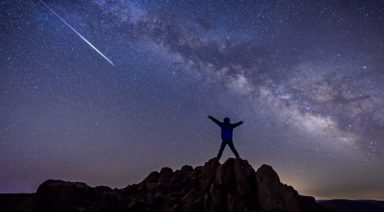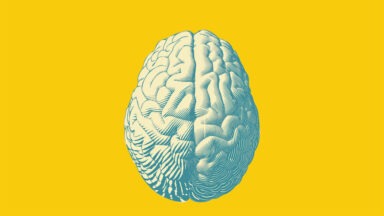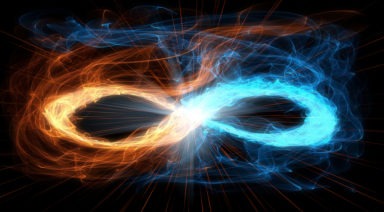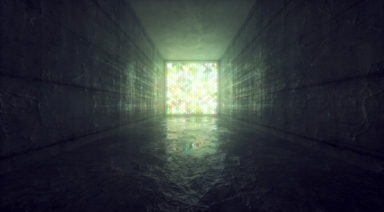What is Astral Projection?

Call it what you like — dream body, astral body, energy body, Buddhist light body, Taoist diamond body, Egyptian ka, Tantric subtle body, Hindu body of bliss — and in Christianity, the experience of different “heavens,” i.e. “I know a man who was caught up to the third heaven. Whether it was in our out of body, I do not know,” from Corinthians 12:1-4. The subtle body is a universal human experience, and apparently part of our standard human design like toenails and kidneys. It is this subtle body that projects astrally and is active during unconscious and lucid dreaming; astral projection and dreaming often go hand-in-hand as “out-of-body” experiences, or OBEs.
The subtle body, when cultivated, can survive the physical body as a matrix for consciousness, and astral projection and lucid dreaming are part of spiritual training paths for subtle body cultivation. Neophytes confuse the subtle body with the soul or spirit, two additional aspects of multi-dimensional humans.
Out of Body Experiences and Astral Projection
The OBE can be intentional or involuntary, as with near-death events when people report finding themselves floating near the ceiling of their hospital rooms, perhaps observing medical staff attempting to revive them. Trauma, illness, or water and food deprivation, as with Native American vision quests, can trigger OBEs. Lucid dream states are opportunities for intentional OBEs. For the purposes of this article, OBEs may be spontaneous, and astral projection a conscious choice, though some would argue otherwise.
Essentially, the OBE begins with an experience of leaving the body and consciously observing it from a detached perspective. With practice and lucidity, awareness can be directed to locations or activities like flight. Yes, flight. If you’ve had flying dreams — literal flying, no 747 required — or being in the sky, you’ve had OBEs. Some say that we have regular OBEs during sleep, often hovering a few inches over our physical bodies.
Neuroscientists are puzzled — while the experience is no longer dismissed out of hand by medical professionals, science holds the view that OBEs involve neurological or brain dysfunction. After his own experience, Dr. Raymond Moody MD became interested in near death OBEs, and for decades interviewed hundreds of experiencers and collected data, defining common qualities of OBEs. Moody identified nine common elements of a near-death OBE — some experiencing all, some, only two or three.
Benefits of OBE
The tantrics mastered lucid OBE and dream states to overcome the fear of death by learning that we are not our “bodies.” They also discovered that the physical body can experience deep healing during OBEs — the mind can be tough on the body. And rather than losing time to practice meditation during sleep, yogis continued working through the night while the body rested.
Some athletes learn lucid dreaming to practice and visualize their game. By working in a dream or out-of-body, not only do they visualize, they have a “felt sense” of their practice, and can actually acquire the muscle memory for winning habits. Others benefit from the opportunity to explore past lives as well as accelerated personal development.

It is our energy, or subtle body that comes and goes from our physical form.
Astral Projection Methods
There are dozens of methods to learn conscious OBE and astral projection. There are two approaches — one is to keep the mind awake while the body falls asleep. It’s tricky — the mind wants to do what the body is doing. The goal is to take the body into deeper and deeper states of relaxation without drifting into unconsciousness. Yoga Nidra is one method. Once the body enters sleep state, practitioners simply “roll” out of their physical form.
Ancient yogis would tie two frogs together before sleep. Once tied, the frogs would continuously croak— a yogi would use the sound to anchor awareness as the body drifted into sleep, and either leave the body, or enter lucid dream states. If, during a dream, the yogi could no longer hear the frogs, he/she knew lucidity had been lost, and could “wake” again within the dream.
How to Astral Project/Travel
Monroe Institute Steps
Bob Monroe, founder of the leading research organization in the field of human consciousness called The Monroe Institute, penned a body of work titled “Journeys Out of the Body” in 1971 in which he provides a detailed outline for how to astrally project one’s self in seven steps:
- Step 1: Relax, both physically and mentally.
- Step 2: Enter a hypnagogic state, or half-sleep.
- Step 3: Deepen the state by prioritizing mental sensation over physical sensation.
- Step 4: Pay attention to the presence of vibration in your environment, which becomes apparent in a state of deep attention.
- Step 5: Incur the vibration in your physical body, and relax into its presence. The purpose of this is to gently jiggle the subtle body out of the physical body.
- Step 6: Focus your thoughts on leaving the limbs and the torso, and try to do so one at a time.
- Step 7: Known as “lifting out,” focus on effortlessly drifting out of your physical body.
The Astral Projection Rope Technique
From the work of Robert Bruce, founder of the Astral Dynamics movement, the rope technique is regarded one of the most accessible astral projection methods.
Step 1: Relax the physical body by visualizing each muscle.
Step 2: From your space of relaxation, enter a vibrational states; this should feel like an amplified version of a cell phone’s vibration mode pulsations coursing through the body.
Step 3: Imagine a rope hanging above you.
Step 4: Using the astral, or subtle, body, attempt to hold on to the rope with both hands. The physical body remains completely relaxed.
Step 5: Begin to climb the rope, hand over hand, all the while visualizing reaching the ceiling above you.
Step 6: Once you are aware of your full exit of the physical body, you are able to explore the astral plane.
Lucid Dreaming Techniques
Again, there are numerous lucid dreaming techniques. Some are designed to train the sleeper to wake within the dream, others offer methods of staying lucid while letting the body fall asleep.
A Nootropic Approach
Yes, it’s sounds weird. Nicotine has specific actions on brain chemistry — but no, it’s not about smoking. Considered a cognitive enhancer, nicotine is gaining fans among biochemical brain hackers.
Many, using nicotine patches to quit smoking, have inadvertently discovered what happens when they forget to remove a patch before sleep. Nicotine can induce hyper-realistic, but bizarre dreams that are so outrageous that many simply say to themselves, “Omg. This MUST be a dream. It’s too nuts to be anything else.” And voila — lucidity is attained. This is not an endorsement of the method, as many report nightmares when using nicotine.
Lucid Dreaming With Habit and Repetition
We attain lucidity the instant we recognize we’re in a dream state. Some people train by asking themselves, several times a day for days or weeks, “is this a dream?” The question eventually gets stuck in the place songs and jingles get stuck and are hard to unstick — things like “Afternoon Delight” by the Starlight Vocal Band. You know what we’re talking about.
The premise is that the question begins to habitually repeat by itself, and that eventually the mind will ask during a dream. When the dreamer answers, “why yes, this IS a dream!” they achieve lucidity.
The best opportunities for becoming lucid within a dream are during REM (rapid eye movement) sleep. This stage happens in the first two hours after we fall asleep and before we wake up. By waking and going back to sleep during the night we increase REM sleep time. Some use the sleep/wake method by setting interval alarms during the night, getting up for a few minutes, and going back to sleep with an intention of keeping the mind awake. If awakened during a dream, immediately go back to sleep — if possible, re-enter the dream with lucidity.
Remote Viewing in Sidereal Time Can Enhance Telepathy

There appears to be evidence that psychic phenomena can be affected by external factors, including geomagnetic forces and our alignment with the cosmos. As strange as this may sound, researcher James Spottiswoode discovered significant data showing that remote viewing in sidereal time is directly correlated with success, or lack thereof, based on our orientation to the center of the Milky Way Galaxy. Though, he doesn’t know exactly why.
How One Researcher Knew to Calculate Sidereal Time
Sidereal time is a method used by astronomers to keep track of celestial objects. It is based on a time scale of Earth’s rotation in relation to fixed stars in the sky and was used to discover the mysterious nature of pulsars, the highly-magnetized, rotating neutron stars – a source of gravitational waves. But Spottiswoode’s use of sidereal time could point to something more intriguing than gravitational waves; possibly a source emitting or influencing our consciousness.
At a certain point during the day, our zenith, or the point in the sky directly above us, aligns with a particular point in the galaxy. Rather than measuring time based on the Earth’s orientation with the sun, one can measure time based on Earth’s orientation to this galactic point. Days measured in this sense are shorter than solar days by about four minutes, lagging by a little more than one day per year.
So, what does this have to do with remote viewing and psychic phenomena? It turns out that there are peak times during the day when our orientation to the galactic center can enhance success with remote viewing and psychic ability, what Spottiswoode refers to as anomalous cognition. There are also times during the day when psychic ability can be adversely affected by our orientation with the galaxy.

Spottiswoode came to this conclusion by examining a dataset of 20 years worth of psychic research, containing 1,524 trials, between 22 different studies. He found a 400 percent spike in the success rate of tests from remote viewing sessions and wondered what could be causing it. Upon initially examining the time of day when the sessions were being conducted, based on solar time, he kept finding discrepancies. But when organizing the data based on sidereal time, Spottiswoode found a correlation.

At 13:30 h local sidereal time (LST), the data showed that one would have 400 percent greater success with remote viewing. At this time, our planet is oriented with the Milky Way so that the galactic center is located directly on the horizon. This daily period of peak psychic cognition lasts for about three and a half hours, from 12:45 to 14:15 h LST. When the center of the galaxy is directly overhead, or at our zenith, psychic cognition drops to its lowest point, between 17.5 and 20 h.
This Spottiswoode Peak, as it came to be known, had to be connected with something outside of our solar system because sidereal time is based on right ascension, or a longitudinal line to a fixed point in the sky, which rules out anything local due to planetary movement.
But what exactly was this data that Spottiswoode was analyzing and who was he exactly?
Is Remote Viewing Real?
James Spottiswoode is a parapsychologist who has worked on an array of government-funded projects investigating psychokinesis and ESP. He also worked with the Stanford Research Institute during its CIA-funded remote viewing program, known as the Star Gate Project. During his time studying telepathy, Spottiswoode ran experiments testing quantum optics and extremely low-frequency electromagnetic waves on psychic functions.
In addition to discovering the sidereal effect, Spottiswoode found correlations between solar wind and geomagnetic activity in his measurements of anomalous cognition.
During times of low geomagnetic activity, he found that there was an increase in telepathic experiences. This he says, is the only known physical variable that affects anomalous cognition. Geomagnetism is due to interactions between solar wind and the ionosphere, when ionized plasma from solar storms hits the Earth, causing fluctuations in our geomagnetic field. So, if you want to optimize your remote viewing session, make sure you fall within the right sidereal window and plan to view when the solar forecast is clear.

But with all of this evidence, is remote viewing actually real? What did Spottiswoode make of all of this? While his goal was to look empirically at the data and not attempt to measure the quality of the successful sessions, he concluded that the effect sidereal time had on remote viewing was indeed real. He collected data from a new sample of 1015 trials to verify his findings on the original set, reaching the same conclusion. But could there have been a more mundane explanation?
He said that had he found it to correlate with our solar day, he would have associated the phenomenon with circadian rhythms or our scheduled work days, but this wasn’t the case. “…I’ve checked my data carefully and those kinds of effects could not mimic the sidereal correlation I found. Don’t ask me what it is, but it’s real,” he said.
Further research has found the same effect to occur on precognition in animals. One study found a correlation with the 13.5 h sidereal time on Zebra Finches’ precognitive reaction to a stimulus. A correlation was also found on a precognitive test run by Rupert Sheldrake, another researcher who studies psychic phenomena. During this experiment, subjects were tested to see if they could tell who was calling them on the phone before answering. They found subjects were significantly more likely to predict their caller during the peak, 13.5 h sidereal time, compared to the 19 h sidereal time.
If Spottiswoode’s discovery is real it warrants further research into the phenomenon and what could possibly be causing it. Unfortunately, government funding in projects relating to psychic phenomena and remote viewing was cut years ago, at least as far as we know. But for those who meditate, remote view, or astral project, sidereal time should be taken into consideration during your practice. It’s relatively easy to calculate, with websites that let you know what your LST is. Have you ever experienced enhanced psychic cognition due to sidereal time?




































